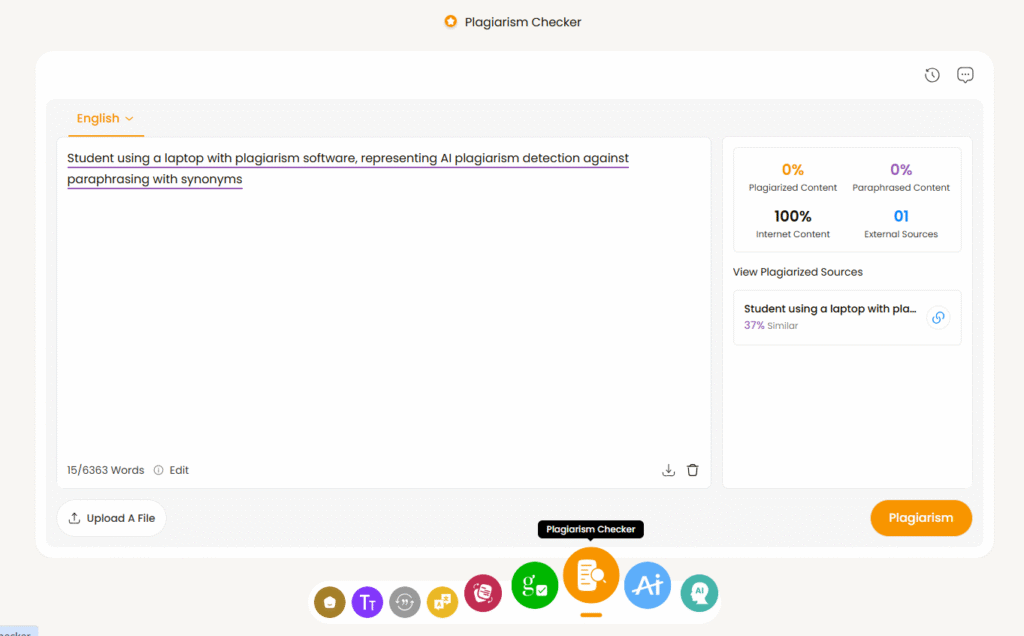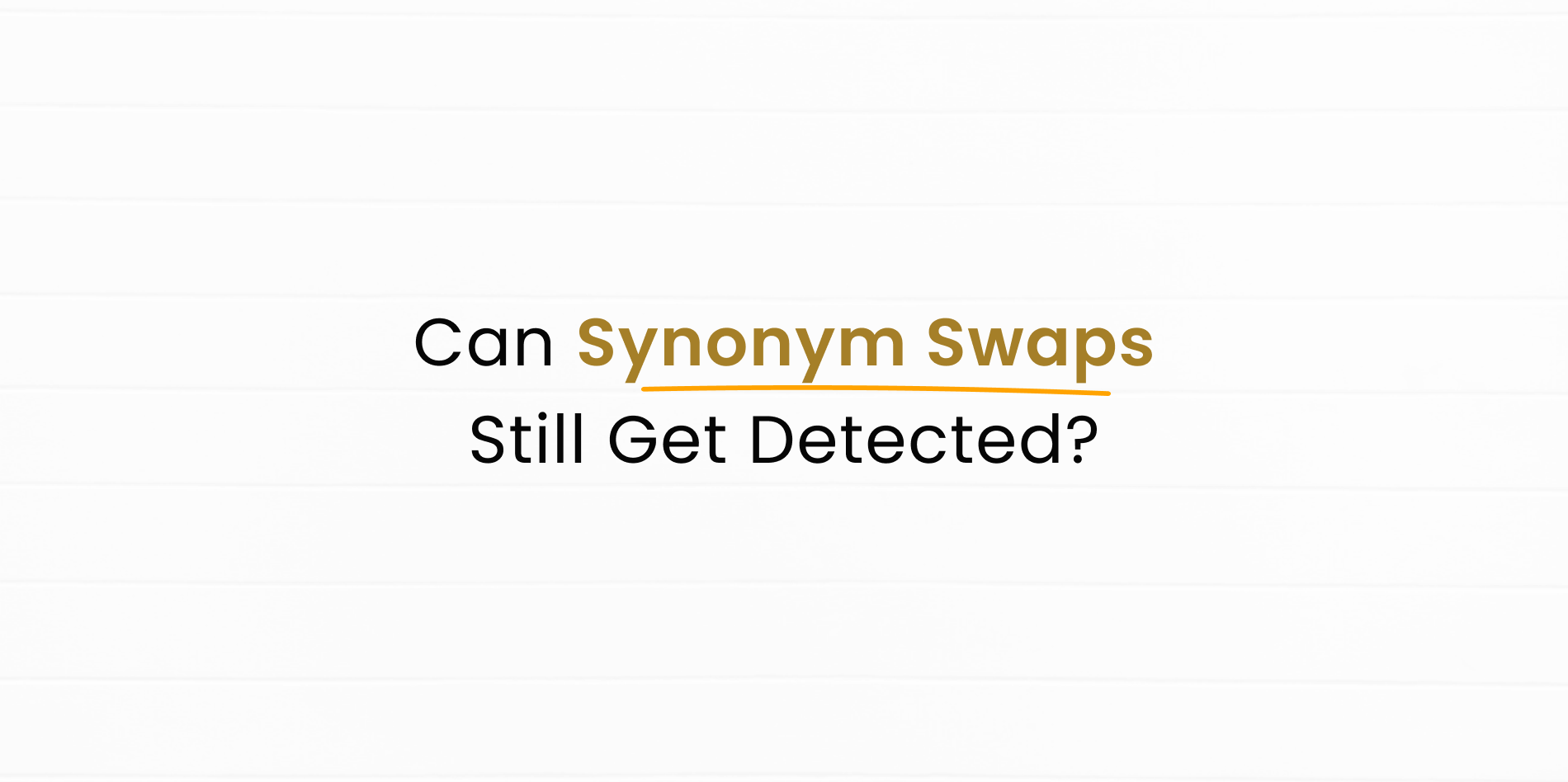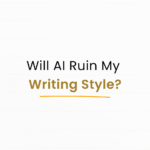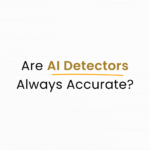Introduction
Plagiarism is a big challenge in schools, universities, and research fields. Today, students can rephrase text using AI tools or swap words with synonyms to disguise copying. But the question remains: Can AI plagiarism detection tools uncover plagiarism when synonyms and paraphrasing are used?
The short answer is yes. Advanced algorithms can go far beyond simple word matching. Tools like the KreativeSpace Plagiarism Checker detect paraphrased plagiarism by analyzing structure, meaning, and context.
What Is AI Plagiarism Detection?
AI plagiarism detection refers to software that uses artificial intelligence to scan text for signs of copied or rephrased material. Unlike older checkers, AI systems do not rely only on identical words. They analyze patterns of expression, sentence structures, and context.
Inline image alt text: Example plagiarism report showing flagged paraphrased sentences rewritten with synonyms.
Can AI Detect Plagiarism If Synonyms Are Used?
Yes. AI can detect plagiarism even if synonyms are substituted. Why? Because synonym replacement rarely changes the meaning of a sentence. AI tools are built to detect:
- Semantic similarity – AI checks if two sentences carry the same meaning, even with different words.
- Structural similarity – even if synonyms change, sentence structure often remains close to the original.
- Contextual overlap – advanced models compare the overall context of passages.
According to Turnitin, AI-powered checkers are increasingly capable of identifying plagiarism that relies on word swaps or shallow paraphrasing.
AI Detecting Paraphrasing in Academic Work
Students often ask if AI detecting paraphrasing can really catch them. The answer is yes, especially if they rely solely on synonym replacement. While human readers may miss it, AI algorithms highlight suspicious similarities.
Examples of plagiarism that AI can detect:
- Word-for-word copying with synonym swaps
- Rewritten sentences with same order and flow
- Ideas paraphrased without attribution
Instead of risking penalties, students can use the KreativeSpace Paraphraser for genuine rewriting and then cite sources correctly.
Why Paraphrasing with Synonyms Still Counts as Plagiarism
Some students assume plagiarism only happens when exact words are copied. But plagiarism with synonyms is still plagiarism because:
- The ideas are not original.
- The structure mirrors the source.
- Credit is not given to the original author.
AI plagiarism detection systems recognize this kind of disguised copying. Universities often use such tools to maintain academic honesty.
AI Plagiarism Checker vs Traditional Checkers
A modern AI plagiarism checker goes far beyond word-matching tools:
- Traditional checkers: flag identical words or short phrases.
- AI checkers: evaluate sentence meaning, context, and rewriting style.
The KreativeSpace AI Detector adds another layer by identifying AI-written text, ensuring both originality and authenticity.
How AI Detects Meaning Beyond Words
To understand how AI detect plagiarism works, consider this example:
- Original sentence: “Artificial intelligence helps students summarize research quickly.”
- Paraphrased with synonyms: “Machine intelligence assists learners in condensing studies rapidly.”
A human may miss the similarity, but AI identifies both as semantically identical. Tools like Grammarly also use semantic analysis, confirming this process works.
Preventing Issues With AI and Paraphrasing
Students can avoid being flagged by AI plagiarism detection with responsible practices:
- Always cite sources, even if paraphrased.
- Use paraphrasing tools for clarity, not deception.
- Combine summarization with personal analysis.
- Check originality before submission.
The KreativeSpace Summarizer helps students condense articles into study notes while maintaining originality.

Human vs AI in Plagiarism Checking
When comparing human vs AI plagiarism checking, AI clearly excels in speed and accuracy.
- Humans may miss paraphrased text unless they know the source.
- AI systematically compares meaning across massive databases.
This ensures even reworded plagiarism can be detected in minutes.
KreativeSpace Tools for Honest Writing
To avoid risks of synonym-based plagiarism, KreativeSpace offers reliable tools:
- Plagiarism Checker for thorough detection.
- Paraphraser for ethical rewriting.
- Summarizer for condensing without copying.
- Grammar Checker for error-free edits.
- AI Detector for identifying overuse of AI content.
These tools encourage academic honesty while improving writing skills.
Best Practices to Stay Safe From AI Plagiarism Detection
- Always cite and reference sources.
- Paraphrase deeply, not just word swaps.
- Use AI tools for support, not shortcuts.
- Double-check originality with a plagiarism checker.
- Add your own analysis and voice to every piece.
Following these practices ensures writing remains authentic and safe.
The Decider
So, can AI detect if someone is plagiarizing by using synonyms paraphrasing? The evidence is clear: AI plagiarism detection tools are highly effective at catching synonym-swapped or lightly paraphrased plagiarism.
With KreativeSpace tools like the Plagiarism Checker and Paraphraser, students can rewrite content responsibly while maintaining originality. Outbound resources like Turnitin and Grammarly confirm that AI catchers are getting smarter.
The decider is simple: synonym swaps do not hide plagiarism. Responsible use of AI ensures integrity, learning, and authentic student writing.



